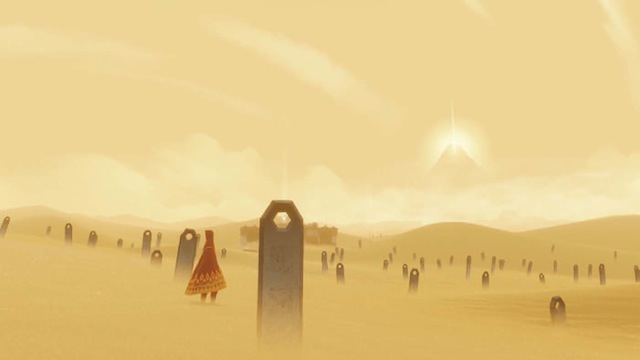
Publisher: Sony Computer EntertainmentJourney is destined to be a classic, I think, but I found it more confused than anything. It worked for me until about four-fifths of the way through, and then something happened that made me stop caring.So, Jenova Chen is a sort of indie-celebrity game designer and the most famous face behind Thatgamecompany, which did flOw and Flower, both PlayStation Network PS3 exclusives, and an earlier game Cloud, which I never played. Journey is the final game in the company’s three-game exclusive Sony PSN trilogy. All of Thatgamecompany’s games shoot for experimental gameplay, though having played flOw, Flower, and now this, they’re growing steadily less experimental as they go. To the extent that Journey disappoints me, it’s because it’s insufficiently experimental to be a satisfying non-game experience.
Advertisement